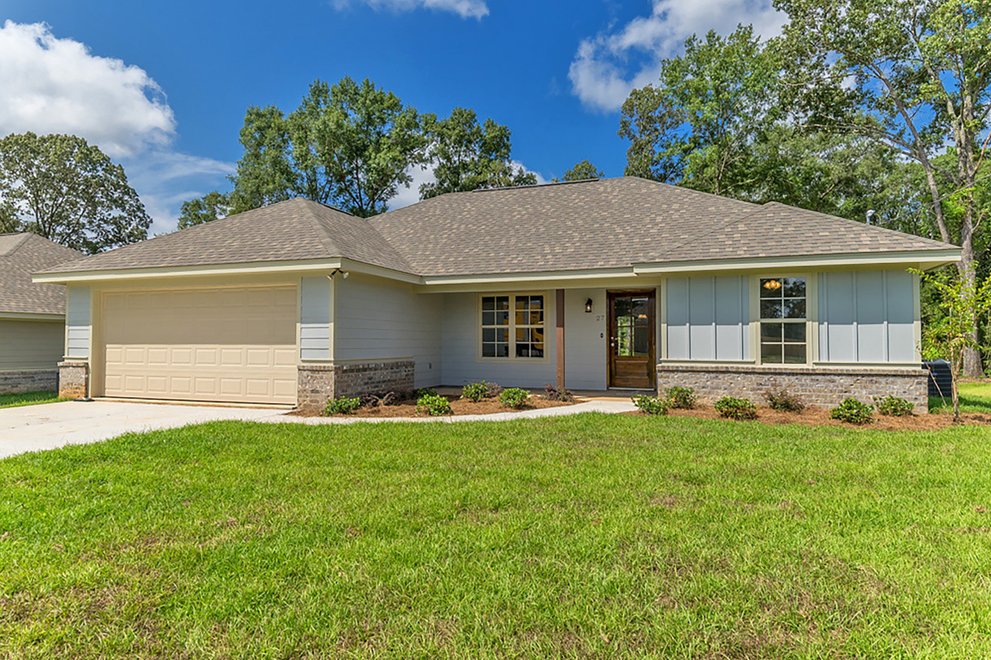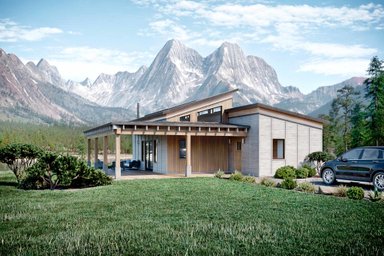Paul Sorensen is a
Northern California contractor who has built a variety of houses in the Napa
and Sonoma Valleys. He uses the “Cost Plus with a Guaranteed Maximum Price
(GMP)” contract type, which is similar to the budget + materials method,
however with a cap on the overall project budget. In his opinion, it’s the best
of both worlds for the owner, in that there’s a cap on the budget based on
construction of the project with specific finishes and details established at
the beginning.
As the project progresses, if the contractor goes over budget the contractor is on the hook. If the project comes in under budget, the homeowner realizes those savings, sometimes with a shared savings clause, incentivizing the contractor to be effective and efficient. Sorensen feels that while this method can sometimes be less profitable to his company than say a “Firm Fixed Price” contract, this method is ultimately more beneficial to the owner, and thus, results in more work for his company and a more “team oriented” relationship between the owner and contractor.
Paul stresses the importance of early contractor involvement on a project. He says: “Keep the contractor in the loop. Small adjustments in the beginning -- say, by the end of schematic design -- can have huge budget savings. Picking a contractor that is trustworthy early in the process will ultimately help the owner use that contractor’s knowledge of logistics and constructability to maximize their construction dollar.
The goal here is to design a project that identifies certain attributes that are important to the owner, such as a large porch, or grand kitchen, and figuring out a way to efficiently incorporate those into the design. Often, there are parts of the project that may not be as important, and reducing the cost of those, can lead to budget surpluses that can be used for “the fun stuff.”
Also homeowners can save money by shopping for deals on fixtures and appliances for themselves early on in the process. People come to Houseplans.com because they want to be hands-on, they often want to pick their fixtures and materials – which, by starting this early in the process, not only can save money but also provide some fun and excitement. Paul’s advice: “If an owner does plan to buy fixtures directly, make sure the contractor carries allowances for these items, so that the total “all in” budget is all inclusive.” Often, a contractor such as Paul has a good understanding of the overall project cost, including items beyond the contractor’s construction budget. Have the contractor provide to you, or review your budget for permits, design, and other things, so that you are on the right track, and are not surprised by unforeseen items such as utility connection fees, or special inspection costs.
Basic Timeline
Step 1: Complete construction drawings; if you already have a contractor, review the plans with him or her at the schematic design phase.
Step 2: Have your contractor give you a Conceptual Budget. Review that budget with the contractor and the designer, and change the design where necessary to properly match the budget with the design.
Step 3: Send project out to bid – to prequalified subcontractors. Always have your contractor bid the project to multiple subcontractors for each trade, to ensure competitive pricing. Develop a deadline for subcontractor and supplier bid submission, then review the bids together as a team. At this point, the Conceptual Budget can be updated, and becomes the Construction Budget. Review this budget together as a team (owner, architect, contractor) to ensure goals have been met. Have the contractor also develop a Critical Path construction schedule, and review this together as a team, identifying key goals or “Milestones” such as Foundation Installation, Roof Installation, Drywall Installation, Systems Startup and Commissioning, and Final Cleaning. Make sure all involved (including the sub-contractors) ‘buy in’ to this schedule and that it is logical and achievable.
Step 4: Start construction, and meet periodically to review budget, schedule, and questions that come up. All projects will have challenges, but hopefully by some up front planning, and clear communication along the way, you will have a team that you trust, and a team that works together to overcome these obstacles and celebrate successes together.
As the project progresses, if the contractor goes over budget the contractor is on the hook. If the project comes in under budget, the homeowner realizes those savings, sometimes with a shared savings clause, incentivizing the contractor to be effective and efficient. Sorensen feels that while this method can sometimes be less profitable to his company than say a “Firm Fixed Price” contract, this method is ultimately more beneficial to the owner, and thus, results in more work for his company and a more “team oriented” relationship between the owner and contractor.
Paul stresses the importance of early contractor involvement on a project. He says: “Keep the contractor in the loop. Small adjustments in the beginning -- say, by the end of schematic design -- can have huge budget savings. Picking a contractor that is trustworthy early in the process will ultimately help the owner use that contractor’s knowledge of logistics and constructability to maximize their construction dollar.
The goal here is to design a project that identifies certain attributes that are important to the owner, such as a large porch, or grand kitchen, and figuring out a way to efficiently incorporate those into the design. Often, there are parts of the project that may not be as important, and reducing the cost of those, can lead to budget surpluses that can be used for “the fun stuff.”
Also homeowners can save money by shopping for deals on fixtures and appliances for themselves early on in the process. People come to Houseplans.com because they want to be hands-on, they often want to pick their fixtures and materials – which, by starting this early in the process, not only can save money but also provide some fun and excitement. Paul’s advice: “If an owner does plan to buy fixtures directly, make sure the contractor carries allowances for these items, so that the total “all in” budget is all inclusive.” Often, a contractor such as Paul has a good understanding of the overall project cost, including items beyond the contractor’s construction budget. Have the contractor provide to you, or review your budget for permits, design, and other things, so that you are on the right track, and are not surprised by unforeseen items such as utility connection fees, or special inspection costs.
Basic Timeline
Step 1: Complete construction drawings; if you already have a contractor, review the plans with him or her at the schematic design phase.
Step 2: Have your contractor give you a Conceptual Budget. Review that budget with the contractor and the designer, and change the design where necessary to properly match the budget with the design.
Step 3: Send project out to bid – to prequalified subcontractors. Always have your contractor bid the project to multiple subcontractors for each trade, to ensure competitive pricing. Develop a deadline for subcontractor and supplier bid submission, then review the bids together as a team. At this point, the Conceptual Budget can be updated, and becomes the Construction Budget. Review this budget together as a team (owner, architect, contractor) to ensure goals have been met. Have the contractor also develop a Critical Path construction schedule, and review this together as a team, identifying key goals or “Milestones” such as Foundation Installation, Roof Installation, Drywall Installation, Systems Startup and Commissioning, and Final Cleaning. Make sure all involved (including the sub-contractors) ‘buy in’ to this schedule and that it is logical and achievable.
Step 4: Start construction, and meet periodically to review budget, schedule, and questions that come up. All projects will have challenges, but hopefully by some up front planning, and clear communication along the way, you will have a team that you trust, and a team that works together to overcome these obstacles and celebrate successes together.






